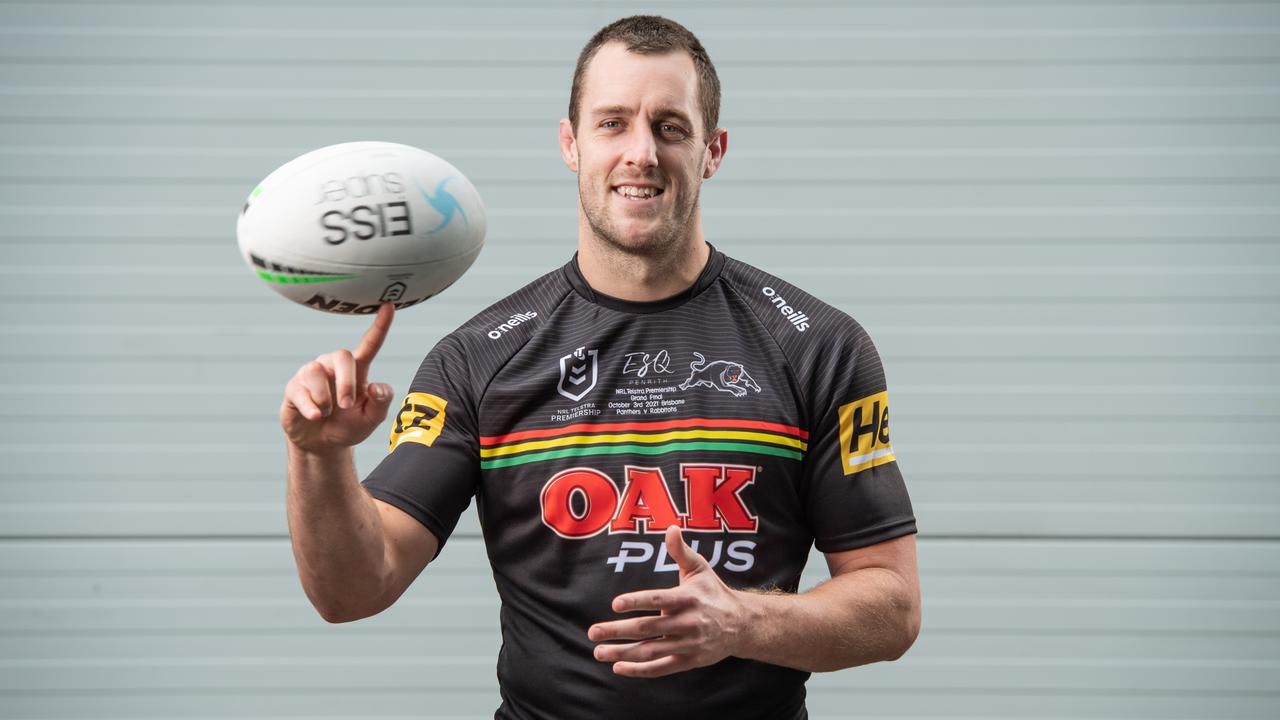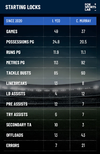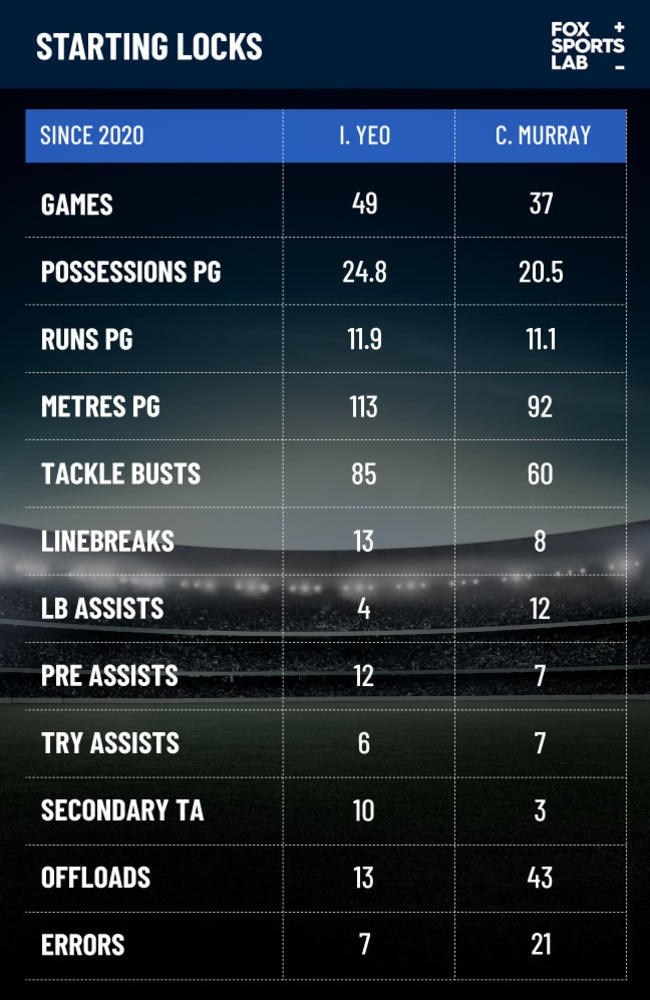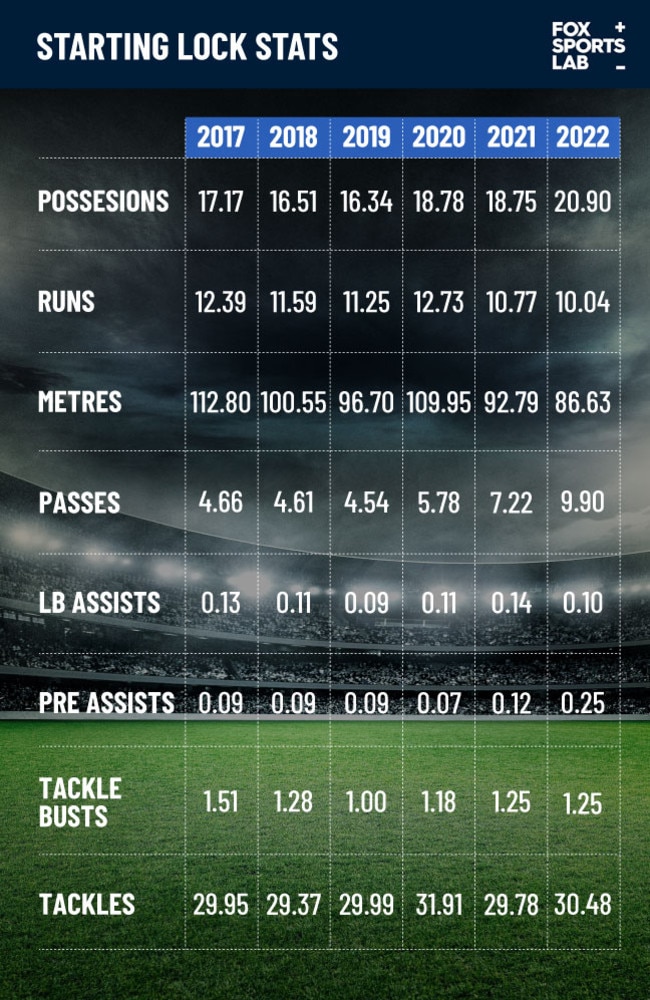Isaah Yeo stands 195 centimetres tall and 106 kilos wide.
And as the modern game morphs once more, the one-time Country Origin winger is front-and-centre as a new playmaking prototype.
Panthers great and NSW Origin selector Greg Alexander is serious when he touts Yeo as Penrith’s next No.7 option behind Nathan Cleary and Sean O’Sullivan.
A $1 million man, Cleary has been sidelined throughout the Panthers’ unbeaten start to 2022. And Yeo – on a salary believed to be closer to $600,000 than $700,000 – has played the part of attacking linchpin to a tee.
Cleary returns in Friday’s grand final rematch with South Sydney to fill out a star-studded playmaking line-up on both sides of the ledger – joining Jarome Luai, Api Koroisau, Cody Walker, Latrell Mitchell and Damien Cook as a collection of the most enticing creative types in the game.
But for all the bells and whistles in the respective spines, an argument can be made that it is the lucky No.13s – Yeo and NSW teammate Cameron Murray – who hold the game in their hands.
Lock and key
Penrith’s post-2019 evolution around Cleary the game-manager and Luai the game-breaker has been analysed and celebrated en route to back-to-back grand finals and last year’s premiership.
Even with a considerable pay rise, captaincy and NSW Origin honours in the Panthers’ transformation Yeo, the Dubbo product who came into grade as a hard-hitting edge man at centre and back row, is still an unsung hero.
At the end of Ivan Cleary’s first season back at Penrith, no side was tackled more often in their opponent’s 20-metre zone. And yet in 2019 the Panthers needed fewer than 17 tackles per try scored from the opposition’s red zone – the worst return of any team.
After more than 100 games on the edge, Yeo was switched into No.13 in 2020 and hasn’t moved since as Penrith’s attack became one of the most dynamic in the game.
Fox Sports Lab stats show Yeo playing a distribution role in the Panthers’ ruck more and more with each season, with their No.13 (Yeo in all but four games) now credited with five times as many passes as they were in 2019.
There’s a clear trend that shows teams like Penrith are embracing the role of the ball-playing lock.
It’s a trend played out across the majority of the NRL’s best sides and in particular, the best ball-playing locks – Yeo, Murray, Manly’s Jake Trbojevic and the Roosters’ Victor Radley.
Not for nothing, Bulldogs coach Trent Barrett emerges as a surprise common denominator in the trend, having coached Trbojevic during his emergence as an elite ball-playing 13 before returning to Penrith to run their attack when Yeo did the same.
Since his arrival at Canterbury – whose woes with ball-in-hand in recent years have ranked among the worst on record – passes from the Bulldogs’ lock have more than doubled as well.
Melbourne are the outlier of the consistently successful teams in recent years and a starting 13 that holds their attack together. But no other side boasts two representative hookers like Brandon Smith and Harry Grant, who alternate between dummy-half and roving around the ruck when on the field together.
“The teams that have those ball-playing 13s, their halves are able to stay out of the chaos of the ruck,” Alexander says.
“They‘re out that little bit wider and it makes life easier for them, they have more space.
“The attacks of those sides are built around their 13. Isaah‘s different because not only does he have speed, but he’s got really dangerous footwork.
“Cam, Jake and Victor are very direct runners whereas Isaah can jink inside or outside and get himself in behind a play-the-ball or make his own break.
“They‘re all very good at picking where the ball goes as that link man and they always go to the line with options. They’ll take a forward with them to the line and then their halfback or playmaker swinging around or out the back.
“Isaah is very good at knowing when to pass, when to run, who to give the ball to and he‘s a danger because the A and B defenders never know when he’s going to take them on himself. He’s the key to pulling this Penrith team together and more and more, we’re seeing him as the linchpin of their attack.”
Isaah Yeo and Cameron Murray are two of the best ball-playing forwards in the competition.
Along with Yeo, Murray boasts very healthy claims to being the NRL’s form player after his captain’s knock against the Roosters.
Each time the 24-year-old’s contract has come anywhere near expiring the Rabbitohs have tabled a long-term extension, in much the same way Manly has done with Trbojevic (signed alongside brother Tom until the end of 2026) and the Roosters have with Radley (whose five-year deal expires next season).
Murray’s estimated $800,000 a year wage is understood to increase year-on-year through to the end of 2025, and given his unique role in the Rabbitohs’ attack, looks an absolute steal.
“Cameron keeps the defence so honest,” Alexander says.
“When the Roosters forgot what he can do last week, they rushed up, he read that, sold a dummy and went straight through.
“He runs a very direct line and the other element he brings is a very fast play-the-ball.
“When he takes a couple of players to the line, if it‘s a one-on-one tackle because his support players drag defenders away from him, odds are you’ll get a quick play-the-ball and that’s something else in its own right that Cook or Cody Walker can work off – it’s one of South Sydney’s best attacking weapons.”
Back to the future
By the numbers, over the past six seasons, starting locks are handling the ball more often, doing more with it and running less.
The most talked single figure of recent times – six-again – no doubt has played a significant role in the adjustment.
This season especially to date has seen pre-assists – the pass that comes before a line-break is laid on – almost triple from No.13s across the game.
More and more, particularly among the NRL’s best sides, it is a ball-playing lock that dictates where and how a team attacks and what platform a half plays from.
Locks are playing a bigger role with ball in hand in the NRL.
“We’re seeing a bit of a throwback to the mid-90s,” Alexander says, “with a key difference to when we had guys like Nik Kosef and Jim Dymock playing effectively as big halfbacks.
“The difference between then and now is these days it‘s a lot more structured where the 13 will take a player with them [to the line] and have another out the back.
“That didn‘t always happen in the mid-90s, they played more what they saw and were reading where to play off-the-cuff.
“A decade ago we saw big-bodied 13s as an extra front-rower, I guess the evolution of the fullback was that extra playmaking set of hands alongside the halves and that meant the lock was used as another prop.”
Nik Kosef was famed for playing as a big-bodied halfback in his 90s heyday. Picture: Supplied
And if Newcastle’s off-season overhaul around Kurt Mann is any indication, the ball-playing 13 will only continue to trend upward.
With a relatively inexperienced pairing of Jake Clifford and Adam Clune at the scrumbase following Mitch Pearce’s exit, Mann’s 31.7 touches per game as an 88 kilo lock is on par with Yeo (32.7) and trumps Murray (26.1) so far this season.
The Knights’ attack, stilted to the point of distraction late last season, has looked better for Mann’s increased influence in the middle to date, and is no accident.
“I asked Adam O‘Brien during the trials if (Mann) was going to stay at 13 and he said, ’Yep that’s going to be a big part of our attack this season’,” Alexander says.
“And so far it‘s looking really promising, it’s a good addition to their attack and he gives their halves another playmaking option.
“It‘s a tough role, and I think that’s why there’s only a few who can do it. You have to be able to ball-play, and defend in the middle for near-80 minutes and be right in the middle of the ruck doing all the physical stuff. It’s not easy.”
For those that can though, the proof in recent years has been found at the pointy end of the ladder.
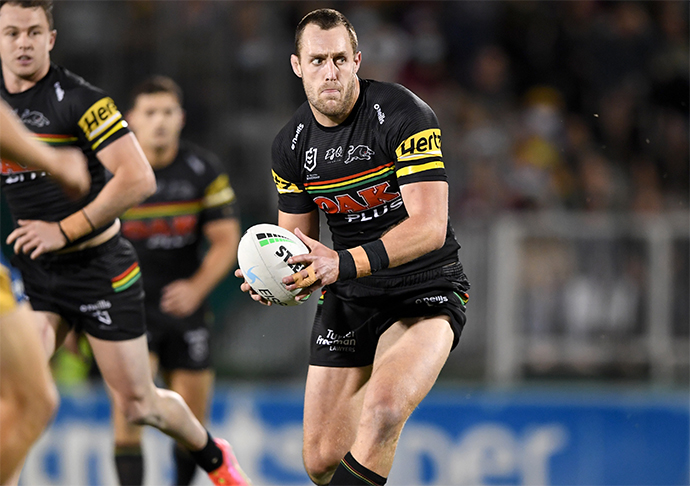
 westernweekender.com.au
westernweekender.com.au

westernweekender.com.au
